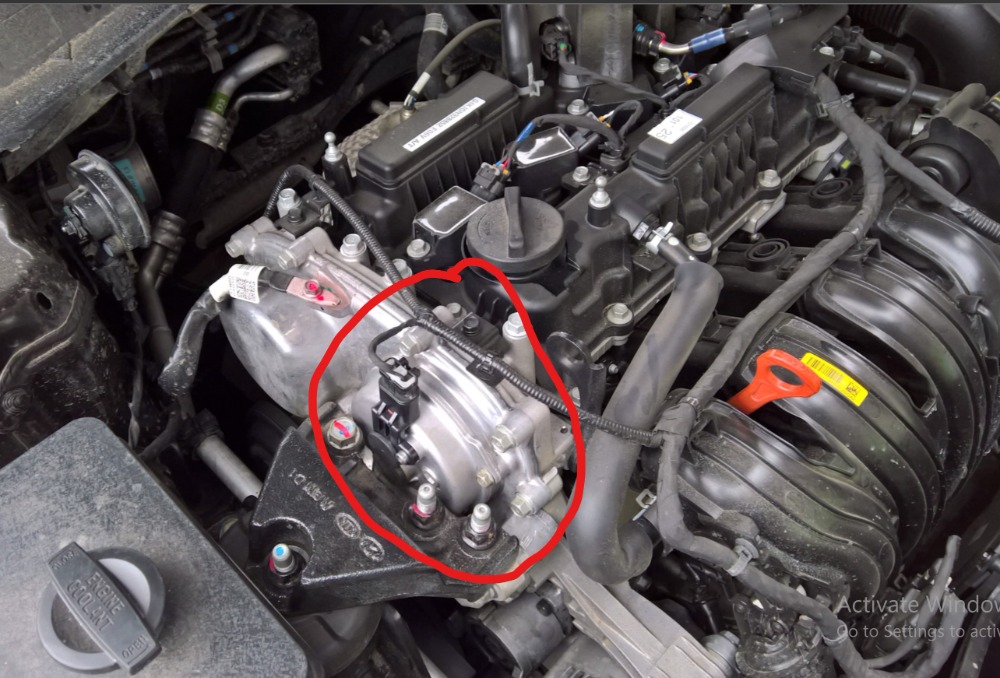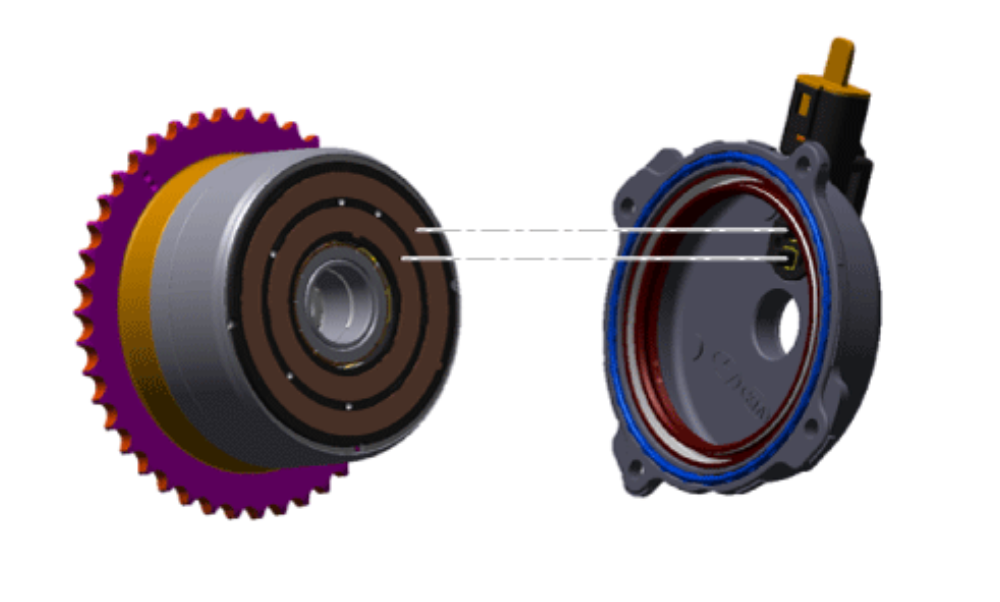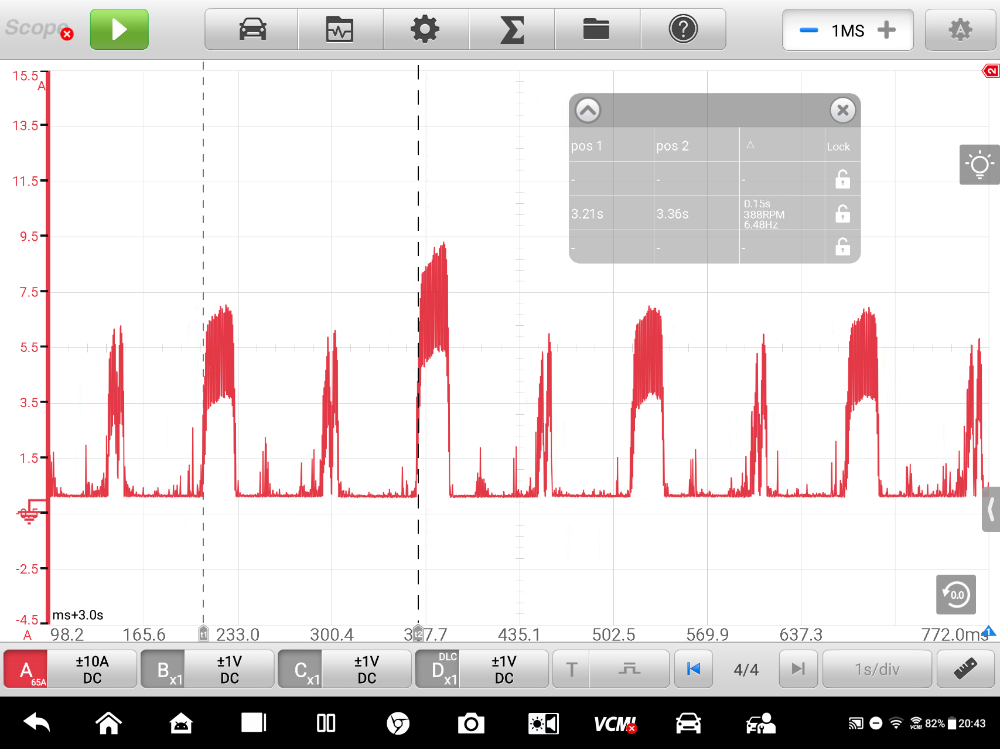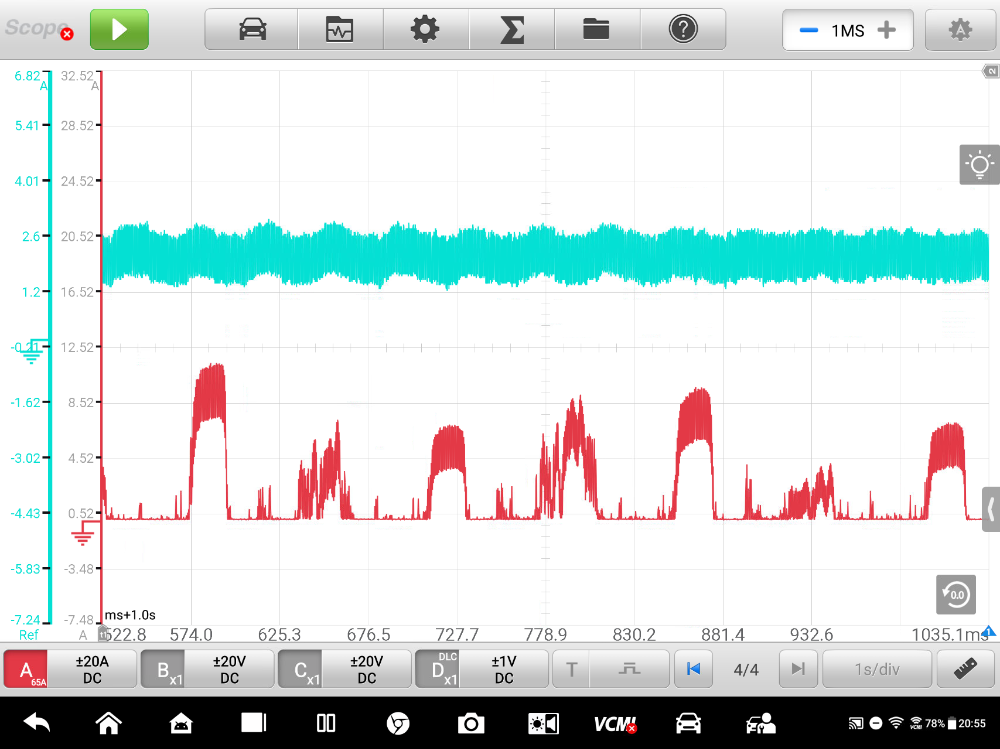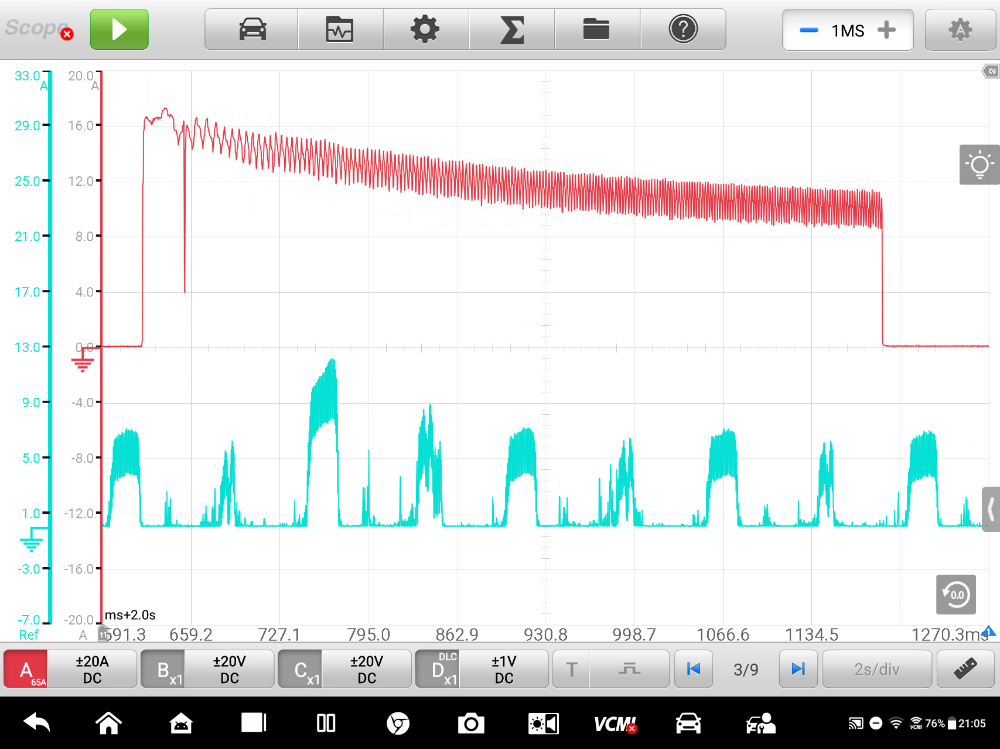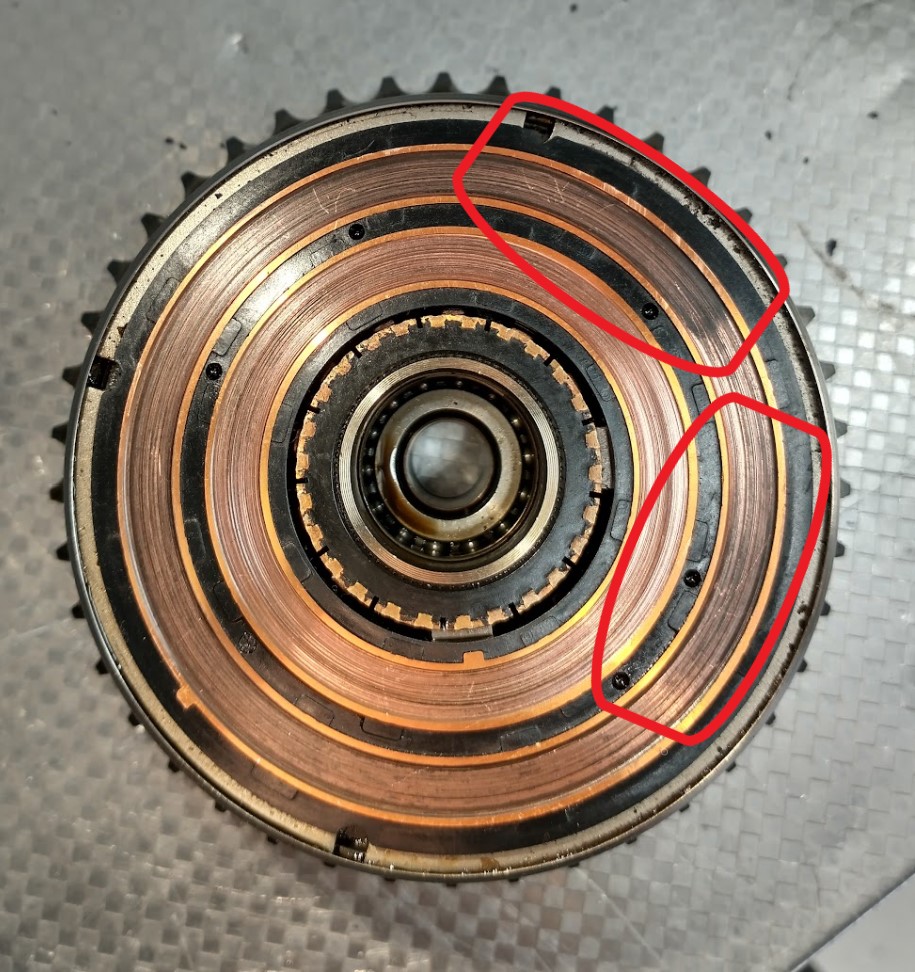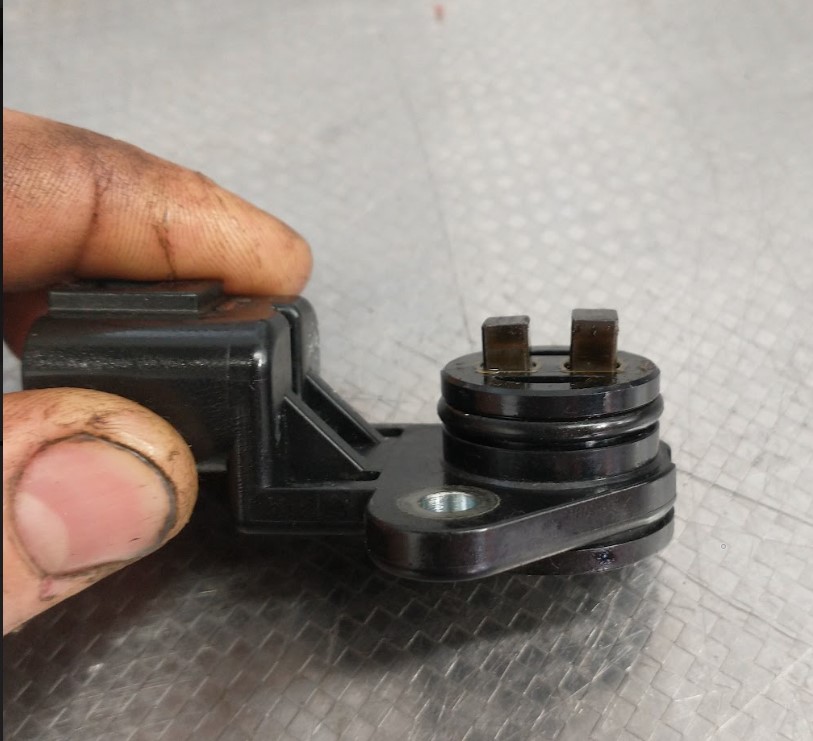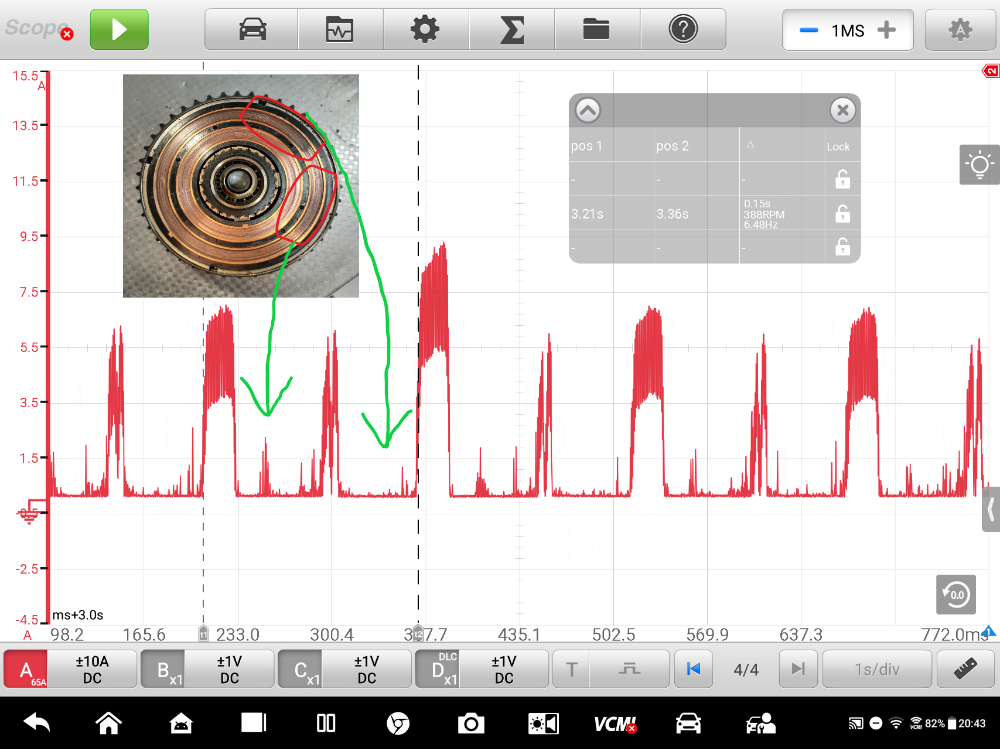*** Restricting New Posts to SD Premium Members ONLY *** (09 May 2025)
Just made a new account? Can't post? Click above.
Hyundai eCVVT Testing
- Tyler
-
 Topic Author
Topic Author
- Offline
- Moderator
-

- Full time HACK since 2012
- Posts: 6042
- Thank you received: 1519
This '16 Hyundai Sonata 2.4L came in with the MIL on and a complaint of low power. P0010 Intake Camshaft Position A Actuator Circuit Bank 1 and P0011 Intake Camshaft Position A System Performance were stored. I'll Cliffnotes the service info for you and say that P0010 pretty well spells out a circuit problem, and P0011 basically says 'the cam didn't do what I wanted it to do'. The P0010 flow chart has you do a couple open circuit voltage checks before telling you to replace the eCVVT actuator.
There are several TSB's related to the eCVVT system out there, but none I could find that related to this Sonata.
eCVVT is their new(er) camshaft timing system which uses an electric motor to do the heavy lifting, instead of a typical phaser driven by oil pressure. The motor is integrated into a camshaft sprocket and goes where a normal camshaft actuator would live, driven by the timing chain. You'll know an engine equipped with one of these by the connector in the upper timing chain cover:
The electric motor part of the system is integrated into a normal-ish looking timing actuator. The electrical connector goes into a typical set of brushes that keeps electrical contact with the eCVVT motor while the engine is running:
In that way, the general setup isn't all that much different front any other brushed electric motor on the car... Right? :huh:
I decide to throw my low amp probe on one of the motor wires to get a known bad waveform before doing the repair. Engine idling, no timing change commanded. What I see initially confused me.
Having never looked at one of these, I really didn't know what to make of it at first.
Regardless, all the other testing points towards a bad eCVVT actuator, so it gets a new one along with a new brush assembly and other timing components. Car is happy afterwards, so I go back for a theoretically known good. Known bad in red, known good in blue/teal/whatever. Again, at idle, no timing change commanded.
Night and day difference. :ohmy: You don't need to be a scope guru to tell this thing is happy. No jagged pattern, no gaps, just (relatively) smooth current flow.
Now I get curious. If the electric motor in the actuator has failed, we should be able to see that on the bench, right? I grab a Power Probe and let it sing while capturing the motor current again. Known bad is now in teal, on the bench in red:
Wait, what? Now it's fine? Can't be.
This is where I get confused. What changed? My best guess has to do with the brushes, and the contact rings on the motor itself:
I've highlighted sections of the outer contact ring that are noticeably discolored. You can also see the outer contact brush has significantly more wear than the inner. I used an ohm meter on the bright and discolored sections of the rings - no significant difference in resistance.
Still, I suspect the root problem lies in the brushed contact between the cover and the motor itself. Remember the speed measurement we made earlier? 388, 766 RPM? It's my (wild) guess that I'm looking at intermittent poor contact as the brushes ride on the contact rings while the camshaft is turning:
But hey, I'm no engineer, just a monkey with a scope. :silly: Am I way off? Missing something? Let me know!
Please Log in or Create an account to join the conversation.
- Matt T
-
- Offline
- Platinum Member
-

- Posts: 751
- Thank you received: 276
Am I way off? Missing something? Let me know!
Circled dark areas on the slip ring don't match the waveform so that is "way off" :silly: They're about 120* combined and the other 240* looks good. Waveform is ~60* good then another ~60* spot where it's trying 180* opposite from the good.
I'm wondering if there may be an intermittent open, or short to ground, inside the actuator which changes with rotation under load. Faults that wouldn't show up in the bench test. Either ways I'm 99% sure actuator and brushes is the right call. About the only other thing that could cause that waveform would be excessive camshaft endplay.
Please Log in or Create an account to join the conversation.
- Tyler
-
 Topic Author
Topic Author
- Offline
- Moderator
-

- Full time HACK since 2012
- Posts: 6042
- Thank you received: 1519
Circled dark areas on the slip ring don't match the waveform so that is "way off" :silly:
That's why I bring my questions here - So you guys can call me out on my nonsense. :lol:
They're about 120* combined and the other 240* looks good. Waveform is ~60* good then another ~60* spot where it's trying 180* opposite from the good.
Nah, you're right, the spacing doesn't match at all. I'm just (badly) trying to find an explanation for the current waveform, and thought a brush/rotor problem fit. :blush:
I'm wondering if there may be an intermittent open, or short to ground, inside the actuator which changes with rotation under load. Faults that wouldn't show up in the bench test.
I thought about that. :huh: My counterargument was that failed fuel pumps and blower motors still usually exhibit some fault in their current waveforms, even when unloaded on the bench. The bench test waveform was pretty clean. BUT, this isn't a normal motor. There's the rotation of the actuator by the chain, and the rotation of the motor inside the actuator itself. :silly:
Either ways I'm 99% sure actuator and brushes is the right call. About the only other thing that could cause that waveform would be excessive camshaft endplay.
Good thought. Didn't measure the endplay with a dial indicator, but it wasn't alarming.
Please Log in or Create an account to join the conversation.
- Baymaster
-
- Offline
- New Member
-

- Posts: 4
- Thank you received: 0
Please Log in or Create an account to join the conversation.
- Tyler
-
 Topic Author
Topic Author
- Offline
- Moderator
-

- Full time HACK since 2012
- Posts: 6042
- Thank you received: 1519
I had one of those in the shop and replaced the cap assembly, it had oil in it so my thought process was that the seal in the cap was worn. I believe there was a tsb for it but the part was backorder. I think the cap assembly contained the brushes.
Mine had oil in it as well. I chalked that up a failed sprocket center seal. Still, I had concerns given how badly gouged the contact surfaces on the sprocket were.
Please Log in or Create an account to join the conversation.

